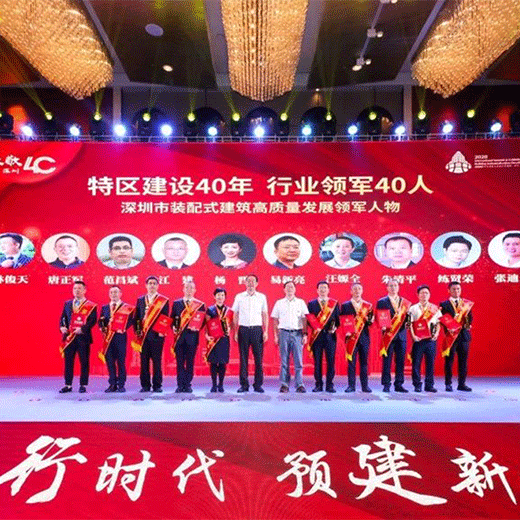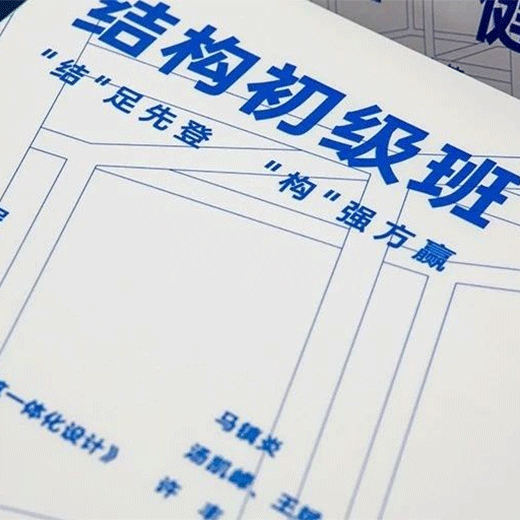
Site of the first course of the architectural director (intermediate) class of Zhubo Training College
The following text is compiled from a speech based on design methodology by Feng Guochuan, the chief architect of Zhubo Design
What are the key points in the project? The key point is the core problem that is derived from the analysis of all the early factors in a design. Finding the key points is the core of the design method. The so-called key point is a kind of "belief" above the rational level.
I believe that the significance of the existence of key points lies in one of them. Designing around the key points will make the work more efficient; on the other level, more important than promoting the design is that the design made will be easier to explain, easier to understand and understand. accept. Architects can think from another angle. As a person who looks at design outside of design, can he often understand the essence of this design? These are what we as architects need to think about in the early stages of design.
When the human eye sees the real object, it is difficult to see the whole situation, and the line of sight will first focus on a certain focal point. Thinking about design in this way, if all aspects of a design presented to people are very balanced and without focus, it will be difficult to understand for those who look at the design, and it will be a disaster. To focus on the design, finding the key points is the first step. We will also carry out all design-related activities firmly around the key points to ensure that the design results can be focused.

Shenzhen Natural History Museum © Beijia Aiqi + 3XN A/S + Zhubo Design
The so-called key points are more specific, that is, some special problems in the design project. Every design project is complex and consists of many questions. But one of them will dominate all other issues, and this is the core issue. This key issue is the fulcrum of the entire design. In other words, if this key problem is solved, other problems will be solved.
Improper search for key points will make the architect unable to grasp the key points of the project. For example, the first and second places in the bidding for the CCTV CCTV building are the plans of the OMA and Toyo Ito teams respectively. The differences in their designs are clearly reflected in the key points.
The key question of Toyo Ito’s team is "what is the future-oriented TV station like". The client of the project is China Central Television, which is essentially a television station. The direction of this concept seems to be no problem. But they misunderstood the focus of this project. In other words, the focus of this project is whether it can bring a new landmark to Beijing. It doesn't matter whether the function of this landmark is a TV station or not.

CCTV CCTV building Toyo Ito team plan

CCTV CCTV Building OMA Scheme
OMA's focus is on "what is the hallmark of this era", and it has almost completely abandoned functions in its design strategy. Based on this understanding, OMA has created a brand new architectural form, and functions and even cost, which are very important factors in other projects, have become secondary issues.

Construction process of CCTV building © OMA
In brief, in the process of finding key points, there are three basic aspects that need to be analyzed and considered: base, project, and customer. After a comprehensive analysis of the above aspects, the architect should have a clear answer: what is the core question.
After the key points are found, a set of rigorous logic is needed to guide the implementation of specific design steps around the key points. We all pursue the efficiency of design. When we can't find a suitable method, it is better to think about why design is sometimes inefficient. Because many times architects lack rigorous reasoning when designing. This will lead to a lack of persuasive design in the results. If the key point is the fulcrum of the entire design, then how to install the design on the fulcrum and make the entire design stand up is the issue we need to pay attention to at this time.
There are many interference factors in the design process. For example, the personal preferences of the architect. These preferences may cause you to slowly deviate from the key points you found in the beginning. If there is a design process supported by strict logic, it will help architects to remain rational in the design process and always design around key points. This process is like a compass, under which it can be ensured that the design path always revolves around the center of the key point, and the key points will be emphasized and emphasized in the process, and a logically rigorous and clear design result will eventually be obtained.
In the industry, there are some architects who have succeeded by relying on their spatial perception and design talents. Their design does not seem to be developed around key points. However, such architects often have a fixed group of clients who appreciate themselves or have very clear design goals. Such architects are often not easy to succeed in bidding projects. As an architect who needs to obtain a project through bidding, it is particularly important to design around the key points.

The apartment building of the talented architect Antoni Gaudí. Image © Jane Cotton
The key point is like a lighthouse, and it is also the final destination of the design. The architect's strategy in the implementation of the design process is to plan a path to the lighthouse. Architects often have a kind of inertia, this inertia makes him feel that a certain aspect is very important, and sometimes makes him skip certain necessary steps and take a "shortcut" to reach the destination. A slight improper operation of this kind will result in a lack of logical links, and some forced "false analysis" will be generated when a preliminary analysis is required. Such a design cannot be self-consistent.
The strategy referred to here is related to design and architecture. I propose to list these potential strategies in a table and present them in the form of analysis diagrams or texts. In the process of designing, we should always reflect on whether there are strategies used in them, and we should continue to pay attention to the implementation of these strategies in the design. Is there any deviation from the key points or core issues of the project?

Detective case-solving analysis. Image © APowley
For example, in the Nanning Planning Exhibition Hall project, we quickly realized that "image" is the key point of the entire project. The strategy here is to create a new architectural image by shaping the relationship between the public space and the site. This image is a new image that transcends the appearance.
There are mountains in the site. The usual practice for this type of project is to make a large square in front of the building and design an authoritative facade for the building. If we want to win in the competition, we must create an image that can stand out on the basis of grasping the image as the primary contradiction. However, in terms of design strategy, we did not follow conventional practices. Instead, we produced a shape without a clear shape and ultimately won.

Nanning Planning Exhibition Hall © Zhubo Design
For another example, in the Shenzhen Guangming Public Service Platform project with similar key points, through preliminary analysis, we found that some of the soft requirements of the project are to dig out the top of the mountain and the building needs to be in a "U-shaped" layout.
We did not follow these potential requirements and even went in the opposite direction in the design. We kept the original mountain top and added the shape of the mountain (the bottom of the building is wavy) to the original mountain top. echo. These are the parts that the architect can grasp and judge flexibly in the process of spreading out the design strategy around the key points.

Shenzhen Guangming Public Service Platform © Zhubo Design
Course preview


Architectural Director (Intermediate) Class II of Zhubo Design Training Institute
Classes will start soon (August 19-22)
As one of the lecturers of the first course of the second term,
Feng Guochuan will bring the following content to the architectural directors of Zhubo:
Course name: "Architectural Design Method Study"
Teaching object: Zhubo Construction Director Class (Intermediate)
Course format:
Course teaching + case discussion report + group practice exercises + after-school exam
Time: August 19, 2021

"Design method is an important aspect of architectural design, which has an important impact on the efficiency and quality of our work. Design method is one of the few courses that can be taught in architecture.
The course explores the design methods and the characteristics, scope of application, effects, etc. of the methods through discussion, lectures, and exercises, and then we will learn a more generally applicable design method together.
Combining derivation design and marketing design together is a design method developed around key points."
In this class, Feng Guochuan will lead the students to discover different design methods, understand the characteristics and scope of application of these design methods, and learn a set of design methods based on key points.

The pictures in the text without the source are all from the Internet
*Follow the official account of Zhubo Design, and there will be more exciting reports on training courses in the future.



